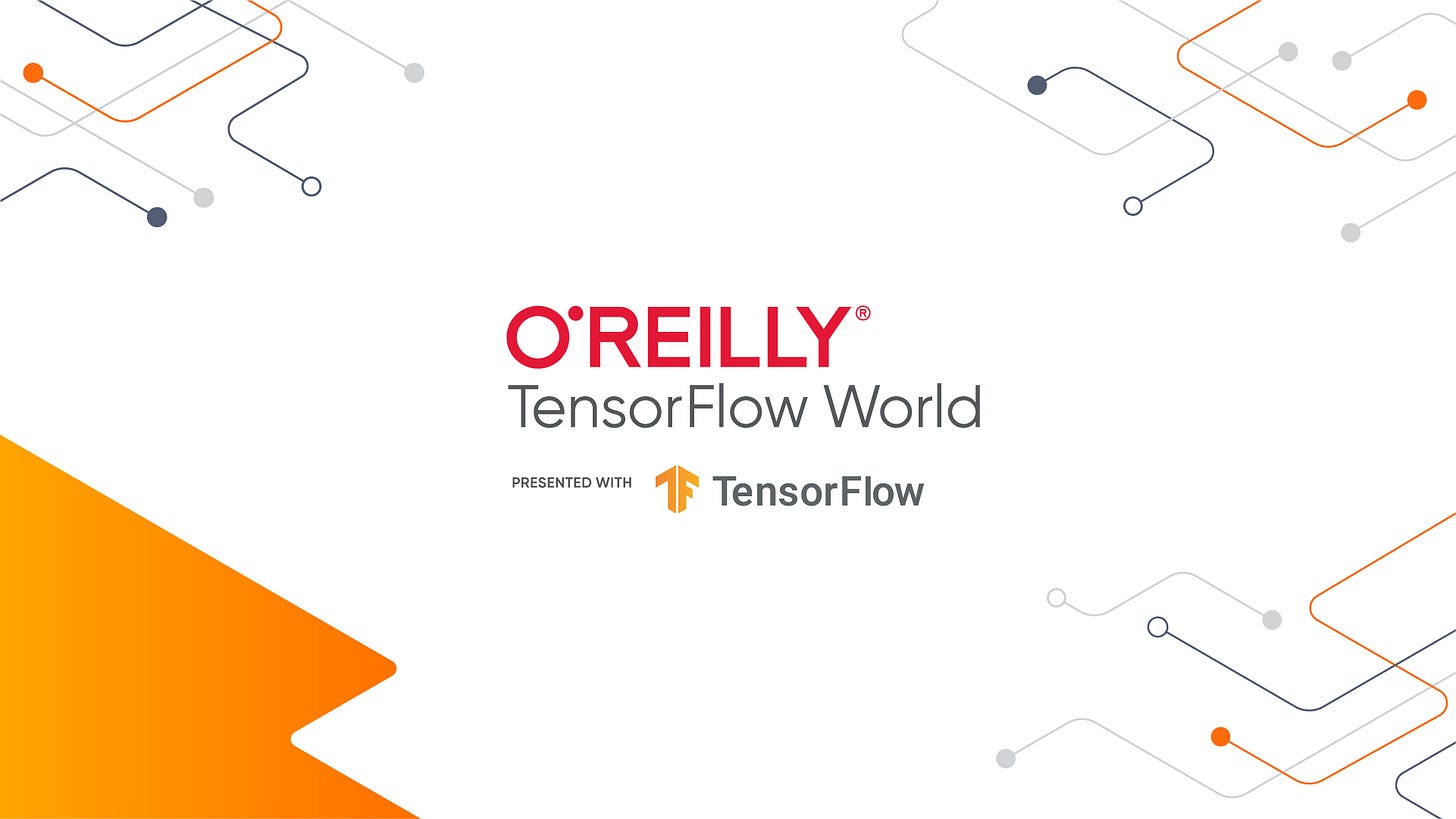TensorFlow World; Microsoft Azure Kinect; Google Coral out of beta
Vision Week Issue #2
O’Reilly TensorFlow World

TensorFlow team has teamed up with O’Reilly to host their first TensorFlow World conference earlier this month. If you are wondering how does this differ from TensorFlow Dev Summit, well, the key difference is in Dev Summit mostly people from the TensorFlow team will present their work. But TensorFlow World is a place for everyone in the community to learn and share what they are building with TensorFlow.
That means you can see talks and sessions from diverse set of people including TensorFlow team. All the sessions from TensorFlow team is up on TensorFlow YouTube channel. Other talks are on the O’Reilly online learning platform. O’Reilly says all the recorded sessions will be available on the platform after three weeks from the conference. They have a 10 day free trial. No credit card required. Give it a try to watch all the sessions.
Azure Kinect
Microsoft has released a new version of Kinect called ‘Azure Kinect DK’. DK stands for developer kit. Original version of Kinect was released almost a decade ago for Xbox. It was mainly intended for gaming use with Xbox. But people also used it for computer vision research because of the depth sensing capability it had.
This time Azure Kinect is solely intended for developers and companies to build things and not intended for regular consumers and this is not meant to replace the existing kinect for Xbox. Microsoft says they have put together their best sensors to build AI applications. It has a 12 MP RGB camera, 1 MP depth sensing camera and microphone arrays. It doesn’t have onboard processor but it can be connected to a CPU to process the wealth of information it captures to build vision and speech applications.
Real time video gesture recognition

Researchers at MIT have developed a new technique “Temporal Shift Module (TSM)” to do video classification efficiently on low compute devices. Generally doing video activity recognition in real time on edge devices is hard because of the high compute. In video classification we look at sequence of frames to predict the class as opposed to looking at a single frame at a time for image classification or object detection. The demo runs in real time on Nvidia Jetson Nano under 10 Watts. (Paper | GitHub | Site)
CVPR 2019
Computer Vision and Pattern Recognition (CVPR) is one of the premier conferences in computer vision. CVPR 2019 was over earlier this year. Not all of us can afford to travel and attend the conference in person. Luckily there is this thing called ‘internet’. Computer Vision foundation has made lot of the sessions available online. You can find the video recordings (if available) on YouTube and slides under each session page on the conference website. This really helps to get a sense of what’s going on in the research frontier.
Ancient Secrets of Computer Vision
Joseph Redmon (the author of YOLO/DarkNet) teaches a computer vision course at the University of Washington. He has generously posted the video lectures on YouTube. It’s definitely one of the good introduction to CV courses available online. Feel free to check it out.
Google Coral TPU graduates out of beta
Google launched it’s new hardware Coral Edge TPU earlier this year in March for AI at the edge. After six months now its stable and out of beta. It runs models in a specific TensorFlow Lite edgetpu format very efficiently for low latency real time applications. AI on the edge is off to a good start. Long way to go though !
3Blue1Brown on Siraj Raval Podcast
You might know Grant Sanderson from his awesome YouTube channel “3Blue1Brown”. He was recently interviewed by Siraj on his podcast where they discussed about doing math animations, Grant’s recent visit to India and more. Listen to the episode to learn more. It is available on Google Podcasts, Spotify and possibly wherever you consume your podcasts.

